I really like to create plant-based dinners that are delicious and packed with nutrients. When it comes to proteins, the range I consider is pretty vast, including chickpeas, lentils, and quinoa, for instance.
If these ingredients aren’t the poster children for the plant-based movement, I don’t know what are. And as for the evening when you accompany me to the dinner table, lets plate the colors of the rainbow?
For protein, I often use tofu, tempeh, or some other “Plant 2.0” specimen. Nuts and seeds play a part, as do herbs like basil, spices like cumin, turmeric, or a few others that I consider my secret weapons in the kitchen.
The 21 Best Plant Based Dinner Ideas
1. Plant Based Buddha Bowl
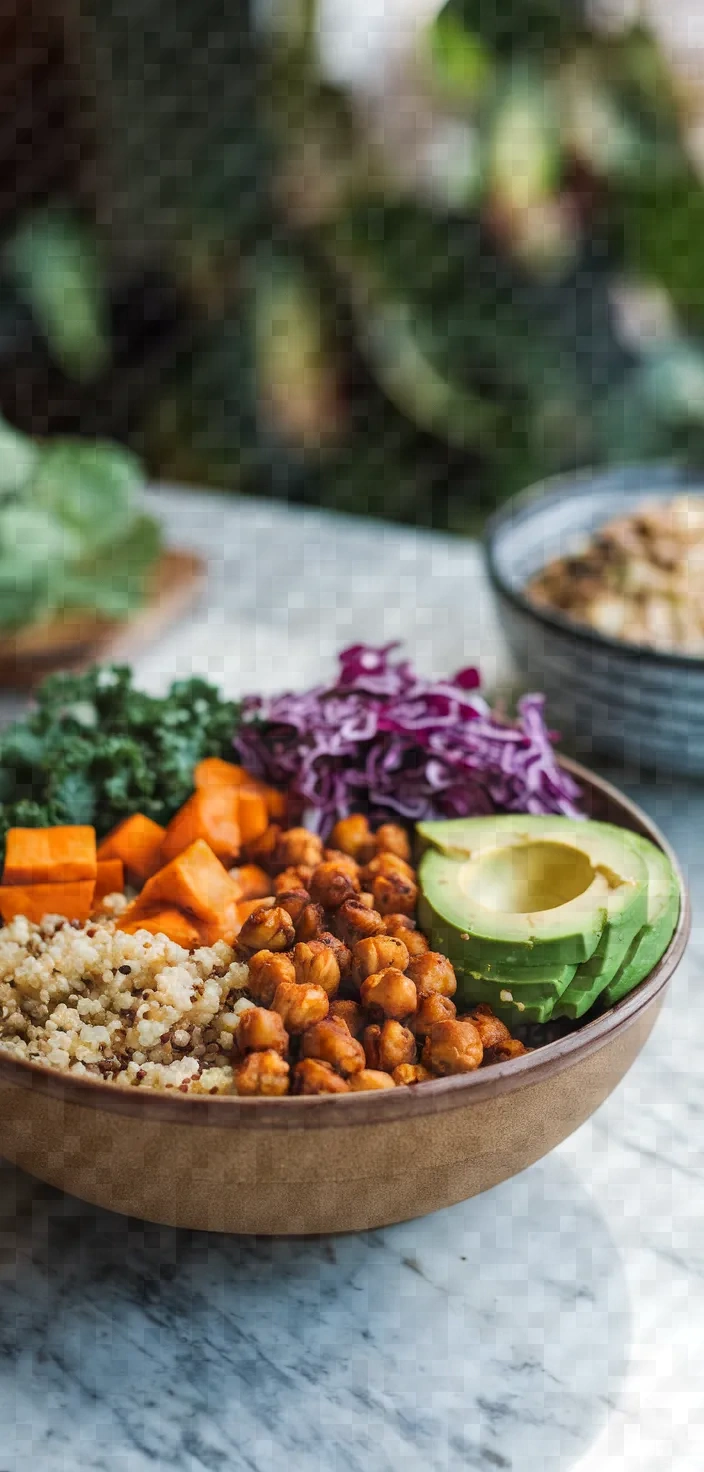
I love to prepare a brightly colored, nutritious, plant-based Buddha bowl. The very name “Buddha bowl” suggests a dish that is hearty, wholesome, and meant to be savored.
This riff on the classic bowl features roasted sweet potatoes and creamy avocado, with a zesty tahini dressing drizzled on top. There are different kinds of textures to enjoy in every bite, not to mention a range of flavors that make a mealtime experience delightful.
 Ingredients
Ingredients
1 cup quinoa, rinsed
2 cups water
1 can chickpeas, drained and rinsed
1 tablespoon olive oil
1 teaspoon smoked paprika
1 teaspoon cumin
Salt and pepper to taste
1 sweet potato, diced
1 tablespoon olive oil
4 cups kale, chopped
1/2 avocado, sliced
1/4 cup red cabbage, shredded
2 tablespoons tahini
1 tablespoon lemon juice
1 tablespoon maple syrup
1 clove garlic, minced
2 tablespoons water (to thin dressing)
Instructions
1. Set the oven to 400°F (200°C). Place the cubed sweet potato in a large bowl and add the olive oil, salt, and pepper. Stir well to ensure that the potato is thoroughly coated, then spill it out onto a baking sheet and spread it into a single layer. Roast for 25 minutes.
2. To cook the quinoa, combine it with 2 cups of water in a saucepan, and bring to a rolling boil. Once at a boil, reduce the heat so that the water is at a gentle simmer. Cover the pan and allow it to simmer for 15 minutes. The entire amount of water should be absorbed, and the quinoa should be quite fluffy.
3. As the quinoa simmers, a separate pan of olive oil waits over a medium-hot flame. Into this I plop my waiting chickpeas. They tumble into the pan and begin to sputter; a couple of them vault out of the pan and onto the stove. Paprika, cumin, and carefully measured amounts of salt and pepper go in next. The chickpeas need about 5-7 minutes to achieve a crispy texture, which is what gives this warm salad its craveable factor.
4. In a tiny bowl, blend the tahini, lemon juice, maple syrup, garlic, and water until they’re all in one smooth, happy place. Season with salt to taste.
5. Take a big bowl and place the quinoa, the roasted sweet potatoes, the wonderfully crispy chickpeas, the finely chopped kale, the perfectly ripe avocado slices, and the nicely shredded red cabbage. If this is a serving for you and some fortunate friends, drizzle on the dressing and toss.
2. Plant Based Stir-Fry
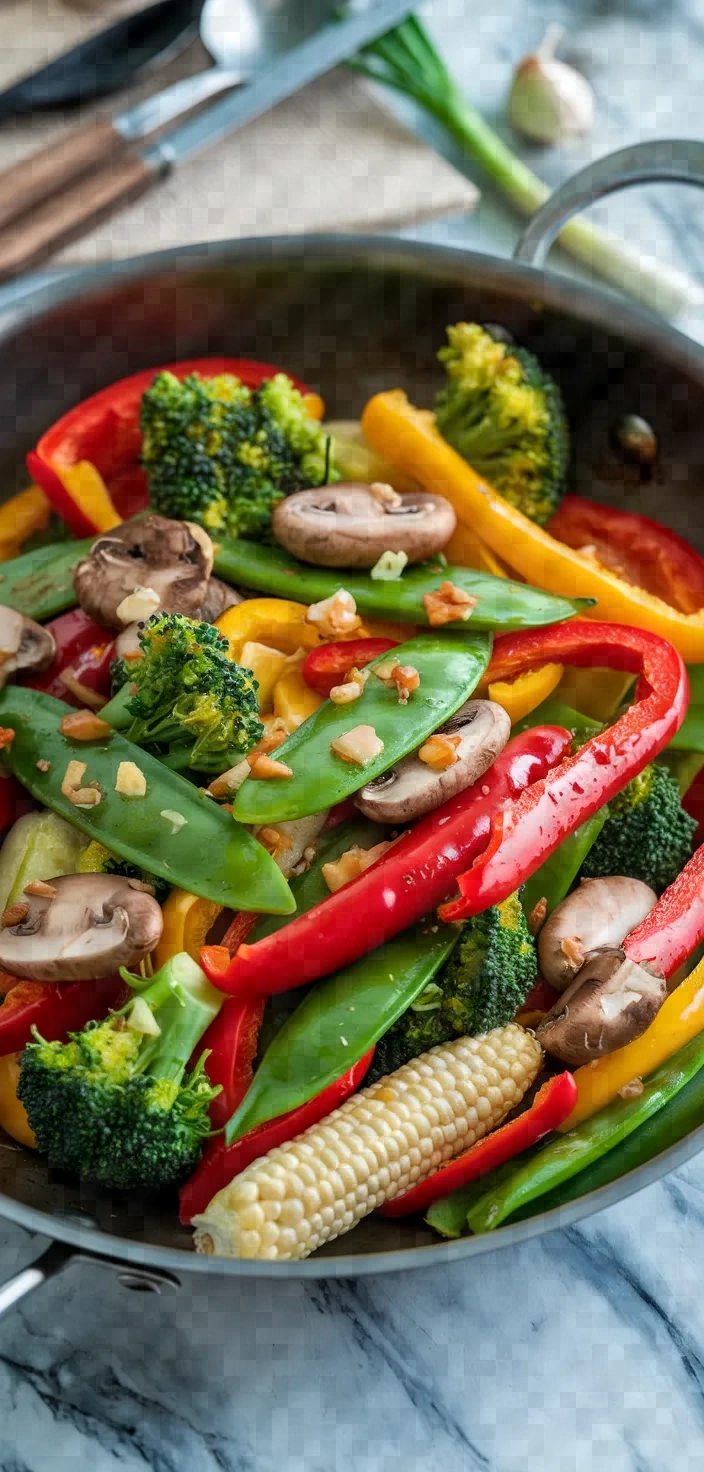
I adore making vivid plant-based stir-fries and using wholesome components like broccoli, sugar snap peas, and thinly sliced mushrooms. Aromatic garlic and ginger form a delicious base for the absolutely necessary soy sauce.
The mushrooms in the stir-fry are like little umami bombs.

Ingredients
2 tablespoons vegetable oil
3 cloves garlic, minced
1 tablespoon ginger, grated
1 red bell pepper, sliced
1 yellow bell pepper, sliced
1 cup broccoli florets
1 cup sugar snap peas
1 cup sliced mushrooms
1 cup baby corn
3 tablespoons soy sauce
1 tablespoon rice vinegar
1 tablespoon sesame oil
1 teaspoon cornstarch mixed with 2 tablespoons water
2 green onions, sliced
Sesame seeds, for garnish (optional)
Instructions
1. In a large skillet or wok, bring the vegetable oil up to temperature over a medium-high fire. Toss in the ginger and garlic, and give them a quick stir. Sauté for about 30 seconds or so, until they smell amazing and you’re feeling hungry.
2. Incorporate the red and yellow bell peppers, broccoli, sugar snap peas, mushrooms, and baby corn into the pan. Stir and fry for 5-7 minutes until the vegetables are cooked yet still retain some crispness.
3. In a tiny bowl, combine the soy sauce, rice vinegar, and sesame oil. You need to be careful in your mixing. Once done, pour over your pan of beautiful stir-fried vegetables and coat them in this delicious sauce.
4. Incorporate the cornstarch blend into the pan and mix thoroughly. Allow it to cook for an additional 1-2 minutes, during which time the sauce will thicken and envelop the vegetables.
5. Add the sliced green onions and take the pan off the heat.
6. Garnish with sesame seeds if you like, and serve immediately.
3. Plant Based Tacos
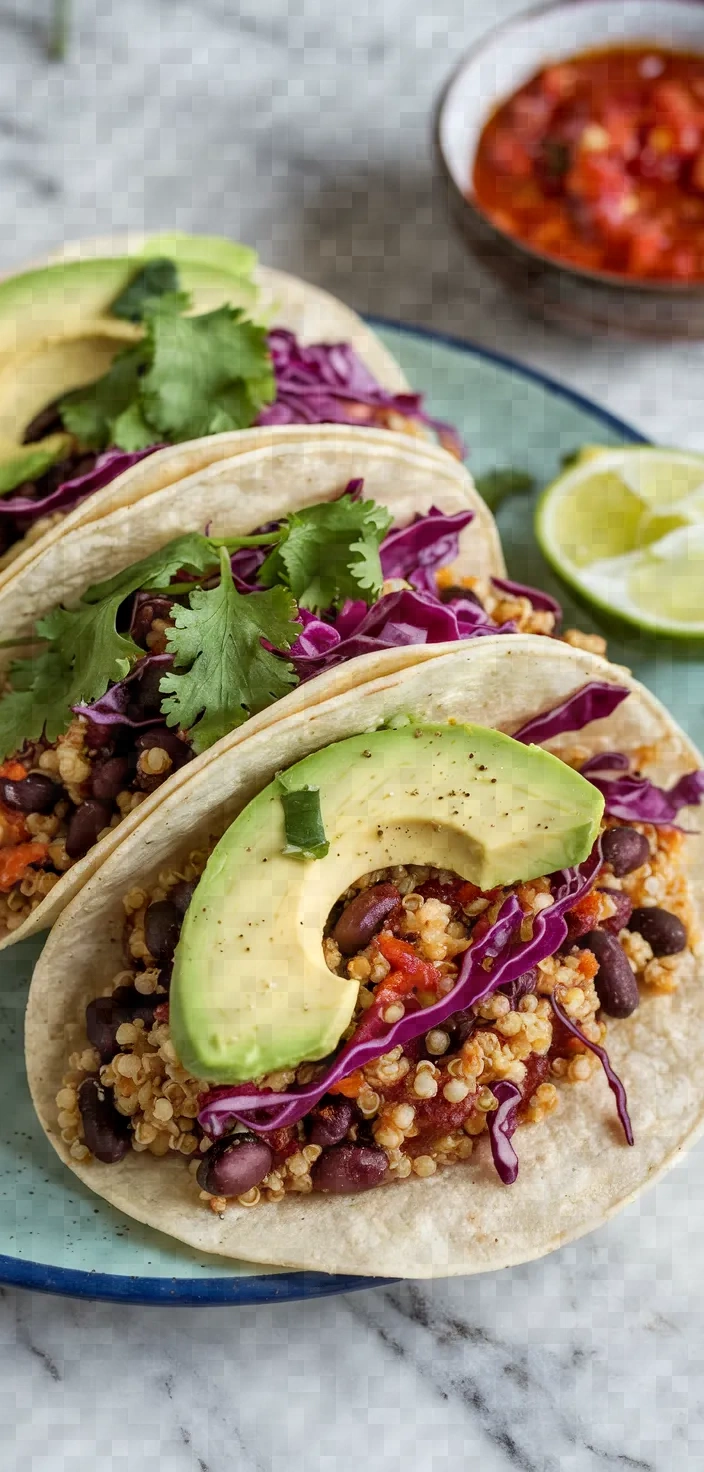
Black beans, quinoa, and a squeeze of lime provide the basic flavors of my plant-based tacos, while cabbage, when I happen to have it, adds the necessary crunch. I’ve mostly made these when I’m home alone, serving them with corn tortillas and topped with avocado and cilantro.

Ingredients
1 cup cooked black beans
1 cup cooked quinoa
1 tablespoon olive oil
1 teaspoon ground cumin
1 teaspoon smoked paprika
1 tablespoon lime juice
Salt and pepper to taste
8 corn tortillas
1 cup shredded red cabbage
1 avocado, sliced
Fresh cilantro, for garnish
Salsa, for serving
Instructions
1. In a frying pan over medium heat, mix the cooked black beans and quinoa. Pour in some olive oil along with ground cumin, smoked paprika, lime juice, and salt and pepper to taste. Stir the mixture well to marry the flavors, and then let it wiggle and jive over the heat for about 5 minutes—or until it seems hot enough to please you.
2. Heat the corn tortillas in a separate skillet over low heat or in a microwave for about half a minute.
3. To make the tacos, first divide the black bean and quinoa mixture evenly among the eight tortillas.
4. Shredded red cabbage and a handful of avocado slices are all that’s needed to make these tacos so good. They might seem simple, sure, but really, these ingredients are what’s going to make the dish you are creating super satisfying.
5. Top with freshly chopped cilantro and serve with your preferred salsa. Enjoy!
4. Plant Based Curry
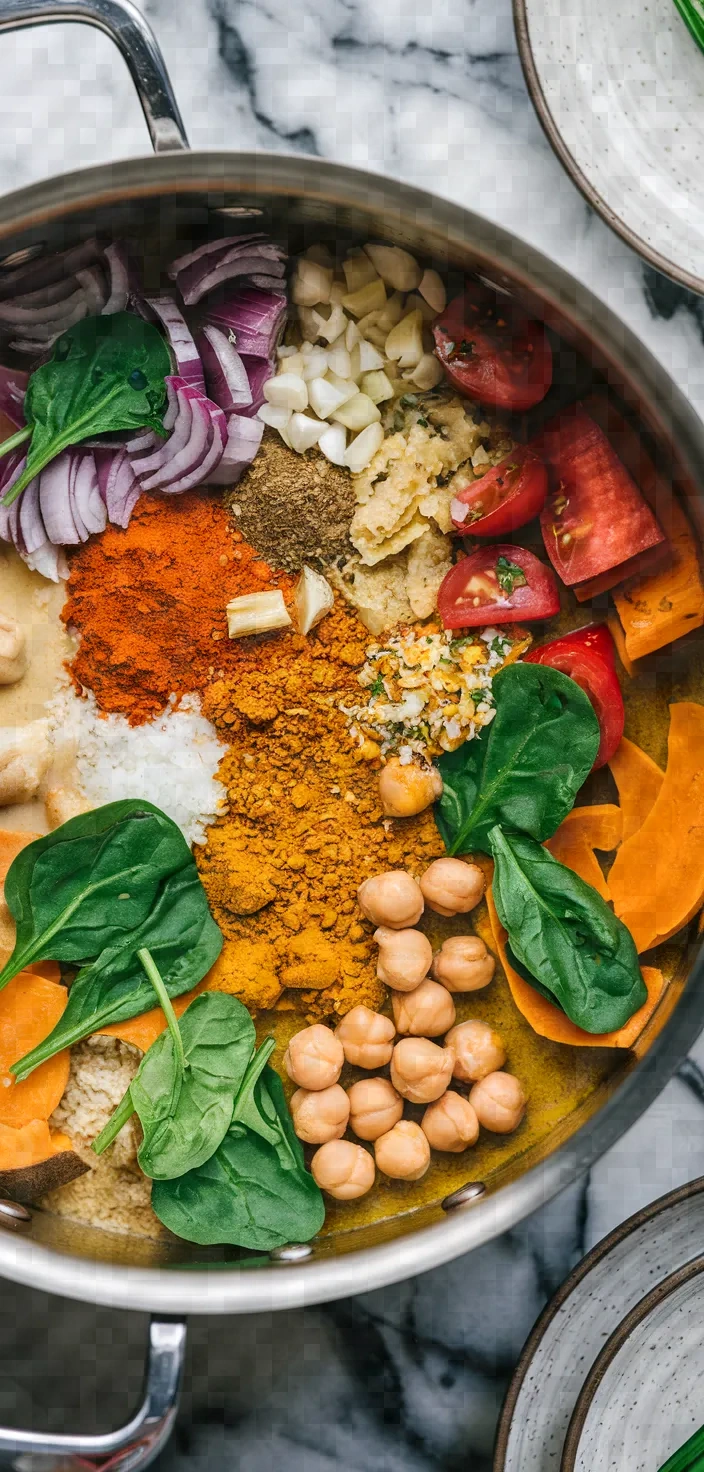
What I adore about this plant-based curry is the way it envelops you in warmth and satisfaction with so few, yet so wholesome, ingredients. Coconut milk, chickpeas, sweet potato, and spinach come together in a delightfully creamy and seriously nourishing meal.
But there’s more. With the depth provided by fresh ginger and diced tomatoes, this dish wouldn’t be the same without curry powder.
Use a good quality blend for the best results.

Ingredients
2 tablespoons coconut oil
1 large onion, diced
3 cloves garlic, minced
1 tablespoon fresh ginger, grated
2 tablespoons curry powder
1 teaspoon ground cumin
1 teaspoon ground turmeric
1 can (14 oz) coconut milk
1 can (14 oz) diced tomatoes
1 large sweet potato, peeled and diced
1 can (15 oz) chickpeas, drained and rinsed
2 cups spinach leaves
Salt and pepper to taste
Fresh cilantro, for garnish#
Instructions
1. In a sizable saucepan, warm the coconut oil on medium heat. Toss in the chopped onion and sauté for about 5 minutes, until the onion is soft and translucent.
2. Blend the garlic and ginger into the small pot, letting them sizzle for a minute in the aromatic oil until they become fragrant. Then, add the curry powder, cumin, and turmeric, giving them a minute to release their essential flavors.
3. Add the coconut milk and the tomatoes cut into dice. Mix well and let it come to a gentle simmer.
4. In the pot, combine the diced sweet potato and chickpeas. Stir thoroughly, put on the lid, and allow to simmer for roughly 20 minutes, or until the sweet potatoes reach a tender texture that can be pierced with a fork.
5. Add the spinach leaves and cook for 2 more minutes until they have wilted. Taste the curry and correct the seasoning with salt and pepper as needed.
6. Serve up the plant-based protein curry, fresh out of the pot, hot and sizzling, with an aromatic, herby garnish, if you fancy. Then, grab a hunk of naan or a bowl of rice and dig in.
5. Plant Based Lasagna
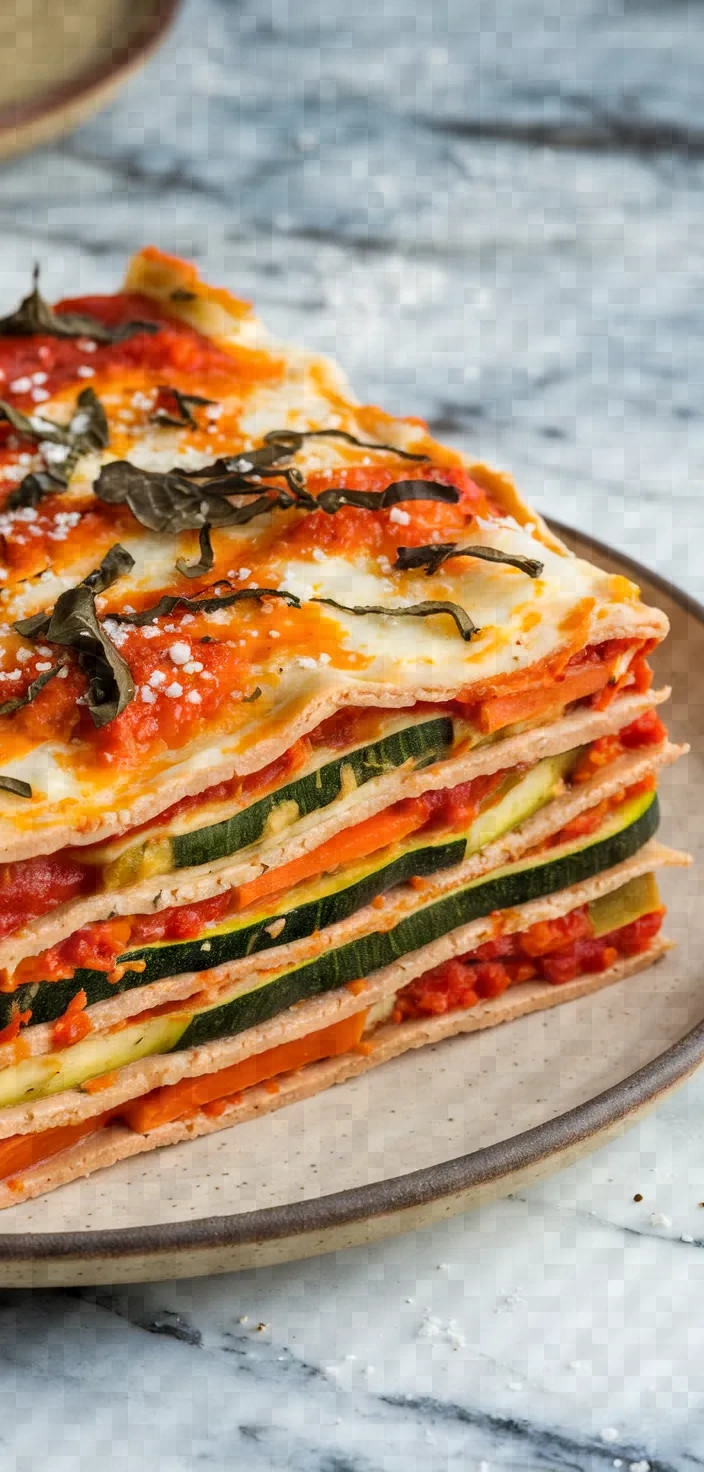
I relish this filling recipe for the colorful mix of zucchini, spinach, and tofu that it contains. Not to mention that the dish also has a terrific homemade marinara sauce, layer upon layer of the sauces, and the noodles sustain you, really, right down to your second helping.
And there is nothing wrong with that.

Ingredients
9 sheets of whole wheat lasagna noodles
1 tablespoon olive oil
1 onion, chopped
3 cloves garlic, minced
1 zucchini, diced
1 red bell pepper, diced
1 carrot, grated
10 ounces (about 300g) fresh spinach
24 ounces (about 680g) marinara sauce
14 ounces (about 400g) firm tofu, drained
1 tablespoon nutritional yeast
1 tablespoon lemon juice
1 teaspoon dried oregano
1 teaspoon dried basil
Salt and pepper, to taste
1 cup vegan mozzarella cheese#
Instructions
1. Set the oven to heat up to 375°F (190°C). Prepare the lasagna noodles as directed in the recipe, then set aside when finished.
2. In a wide pan, warm extra virgin olive oil over a medium flame. Add the onion and minced garlic, and sauté until the onion is mostly translucent, 3-4 minutes, and then add the zucchini, red pepper, and carrot. Continue sautéing for another 5 minutes until the mixture is tender and just starting to brown.
3. Place spinach in the frying pan and heat until just wilted. Blend in the marinara sauce, adjusting the seasoning with salt and pepper to your taste. Remove from heat and set aside.
4. In another bowl, break up the tofu and then add nutritional yeast, lemon juice, dried oregano, dried basil, and just a little salt and pepper. Stir until thoroughly mixed.
5. In a baking dish that measures 9 by 13 inches, spread a layer of the mixture made from vegetables and marinara sauce. Over this, place a layer of lasagna noodles, followed by a layer of the tofu mixture. Make a second layer of noodles, and then make a layer with the tofu mixture again. Top it all with the saucy mixture made with vegetables. Over this, sprinkle something that resembles mozzarella—something of the vegan sort—so that it will melt as the dish finishes baking.
6. Wrap in foil and place in an oven that has been heated to the desired temperature. Allow to bake in the controlled environment for half an hour. After the specified time has elapsed, take off the foil and return the dish to the oven. Let it bake open for a short period of time, about 10 minutes. When you take it out, let it rest for a spell. Then serve it.
6. Plant Based Enchiladas
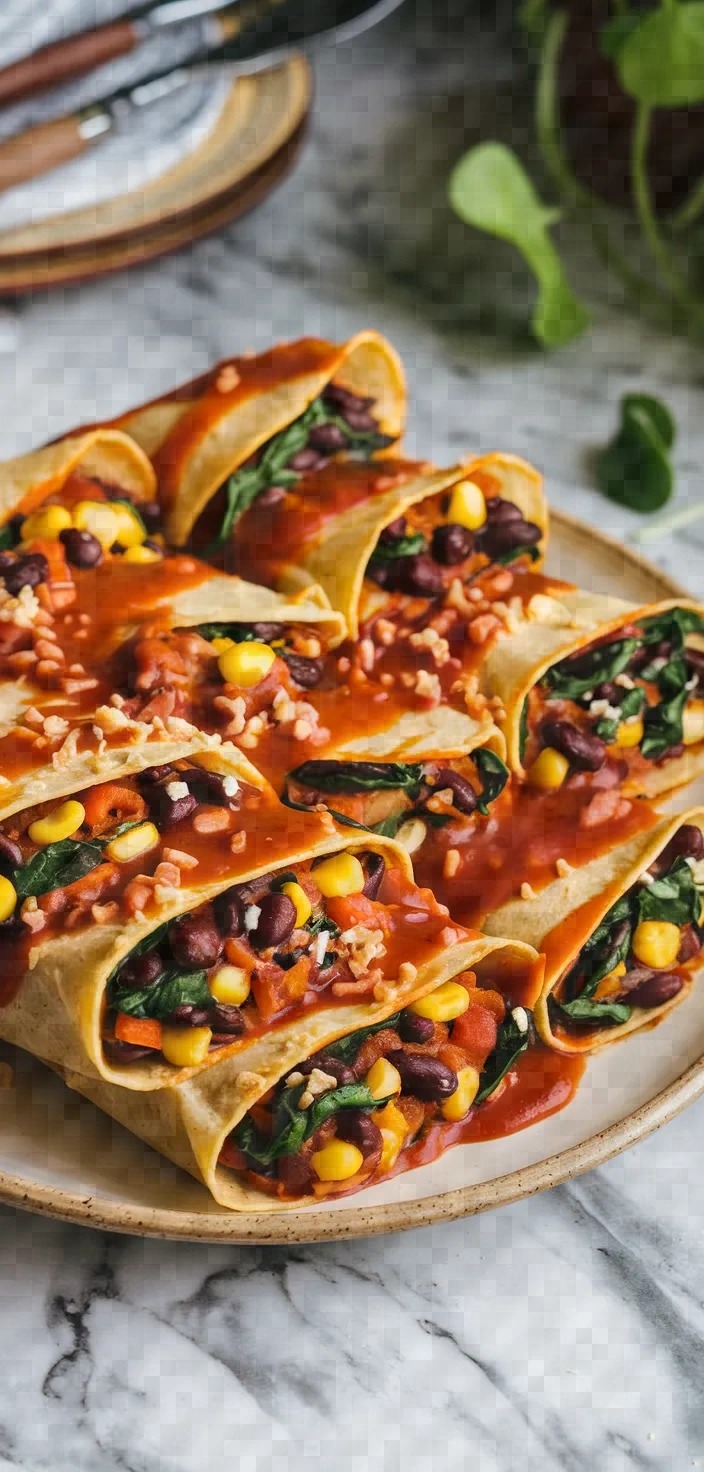
Making plant-based enchiladas is something I take great pleasure in. I enjoy making them and look forward to eating them.
The rich flavor of the dish results from the combination of aromatic spices such as cumin and smoked paprika with the more obvious star of the filling: black beans. Then there are the actual enchiladas themselves, which are made with soft corn tortillas and topped with a cheese-like sauce consisting of nuts and nutritional yeast.
The enchiladas would be just as good without the sauce, but I can hardly resist pouring a sauce over anything and everything if there’s a chance of achieving a creamy consistency.

Ingredients
1 tablespoon olive oil
1 medium onion, diced
2 cloves garlic, minced
1 teaspoon ground cumin
1 teaspoon smoked paprika
1 can (15 ounces) black beans, drained and rinsed
1 cup corn kernels (fresh, frozen, or canned)
1 cup diced bell peppers
1 cup baby spinach leaves
1 can (15 ounces) enchilada sauce
8 corn tortillas
1 cup shredded dairy-free cheese
Salt and pepper to taste
Fresh cilantro for garnish (optional)
Instructions
1. Set the oven to 375 degrees Fahrenheit (190 degrees Celsius) to heat up.
2. In a roomy frying pan at medium heat, pour in the olive oil. When it shimmers, nestle in the onion and garlic. Sauté until the onion is transparent. You are aiming for a stage right before the onion starts to brown. This should take around 5 minutes. Stir in the cumin and smoked paprika.
3. Put the black beans, corn, bell peppers, and spinach in the skillet. Add seasoning—namely, salt and pepper—and cook until the veggies have reached the desired tenderness; I recommend 5-7 minutes for a nice texture contrast to the tender, soft filling you will have in your burrito.
4. Coat the base of a baking dish with a little sauce. Lay out tortillas and fill them with the vegetable mixture, about one-quarter cup for each. Roll the filled tortillas up and lay them seam-side down in the baking dish.
5. Take the rest of the enchilada sauce and use it over the rolled tortillas. Sprinkle the dairy-free cheese on top with a little finesse. Cover and bake for 20 minutes, then uncover and bake for 10 more, or until the cheese is melted and bubbling enough to make some folks drool.
6. If you like, you can add fresh cilantro to the plate as a garnish .
7. Plant Based Chili
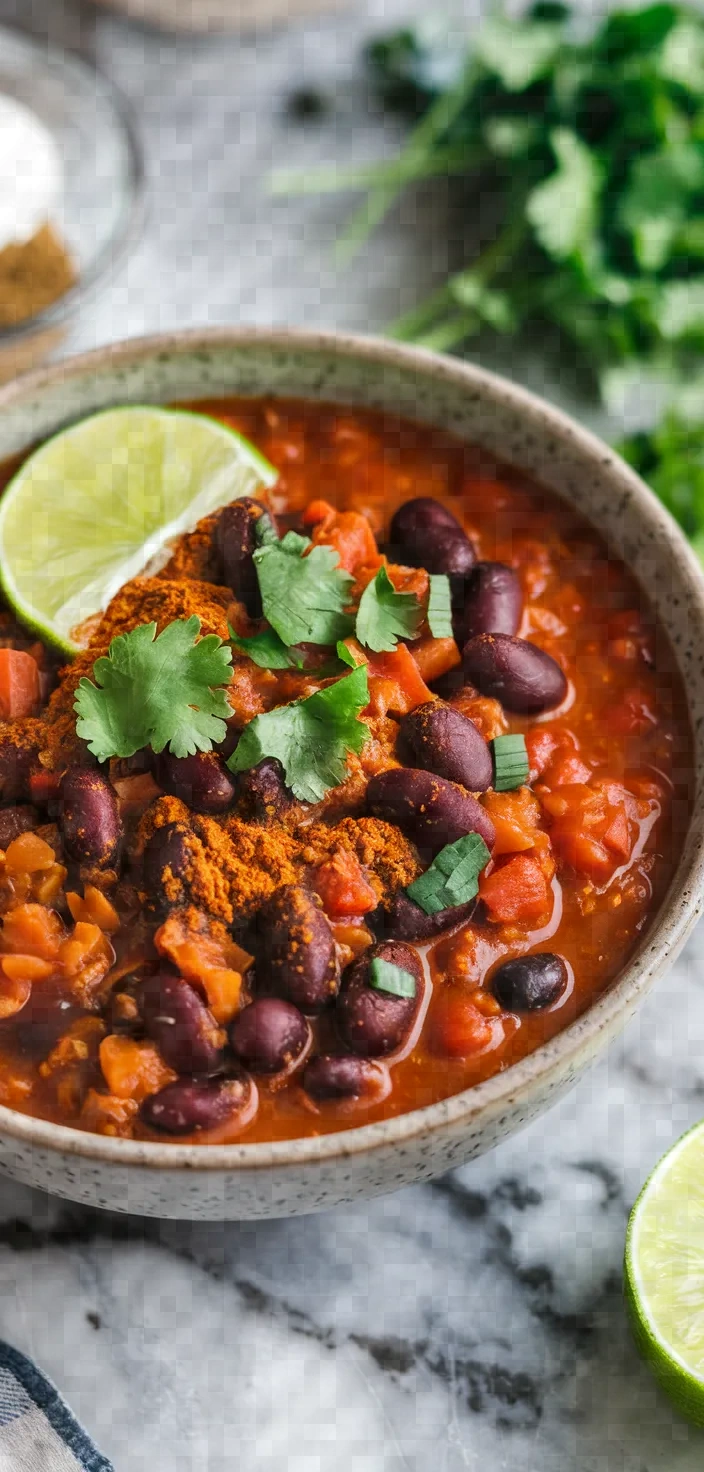
I adore how a robust plant-powered chili encapsulates warmth and richness in every spoonful. This particular recipe melds the riotous colors and flavors from ingredients like red and green bell peppers, black beans, and tomatoes.
It plumbs the depths of savory, soulful flavor, with a touch of lime juice even brightening the dish. When you want to eat something that hugs you back, this is the chili for you.

Ingredients
2 tablespoons olive oil
1 large onion, diced
3 cloves garlic, minced
1 red bell pepper, chopped
1 green bell pepper, chopped
2 medium carrots, diced
2 celery stalks, diced
2 tablespoons chili powder
1 tablespoon ground cumin
1 teaspoon smoked paprika
1 teaspoon oregano
1/2 teaspoon cayenne pepper (optional for heat)
2 cans (15 oz each) black beans, drained and rinsed
2 cans (15 oz each) kidney beans, drained and rinsed
2 cans (15 oz each) diced tomatoes
2 cups vegetable broth
Salt and black pepper to taste
1 cup corn kernels (fresh, frozen, or canned)
Juice of 1 lime
Fresh cilantro, chopped (optional, for garnish)#
Instructions
1. In a large pot, heat the olive oil over medium. Add the onions, garlic, red bell pepper, green bell pepper, carrots, and celery. Sauté for about 5-7 minutes, until the vegetables have softened.
2. Add the chili powder, cumin, smoked paprika, oregano, and cayenne pepper (if you’re using it) and mix them in. Cook them for a minute or two until they’re smelling really good.
3. In the pot, combine the black beans, kidney beans, diced tomatoes, and vegetable broth. Mix thoroughly.
4. First, bring the mixture to a boil. Then lower the heat and let it simmer. Cover the pot, and allow the mixture to cook for around 30 minutes, giving it an occasional stir.
5. Incorporate the corn and lime juice. Add salt and black pepper to taste. Cook for 5 more minutes.
6. If you like, you can sprinkle fresh cilantro on top before serving. But there should be no need for sizzle or fanfare, because this should stand alone as a satisfyingly tasty chili.
8. Plant Based Pasta Primavera
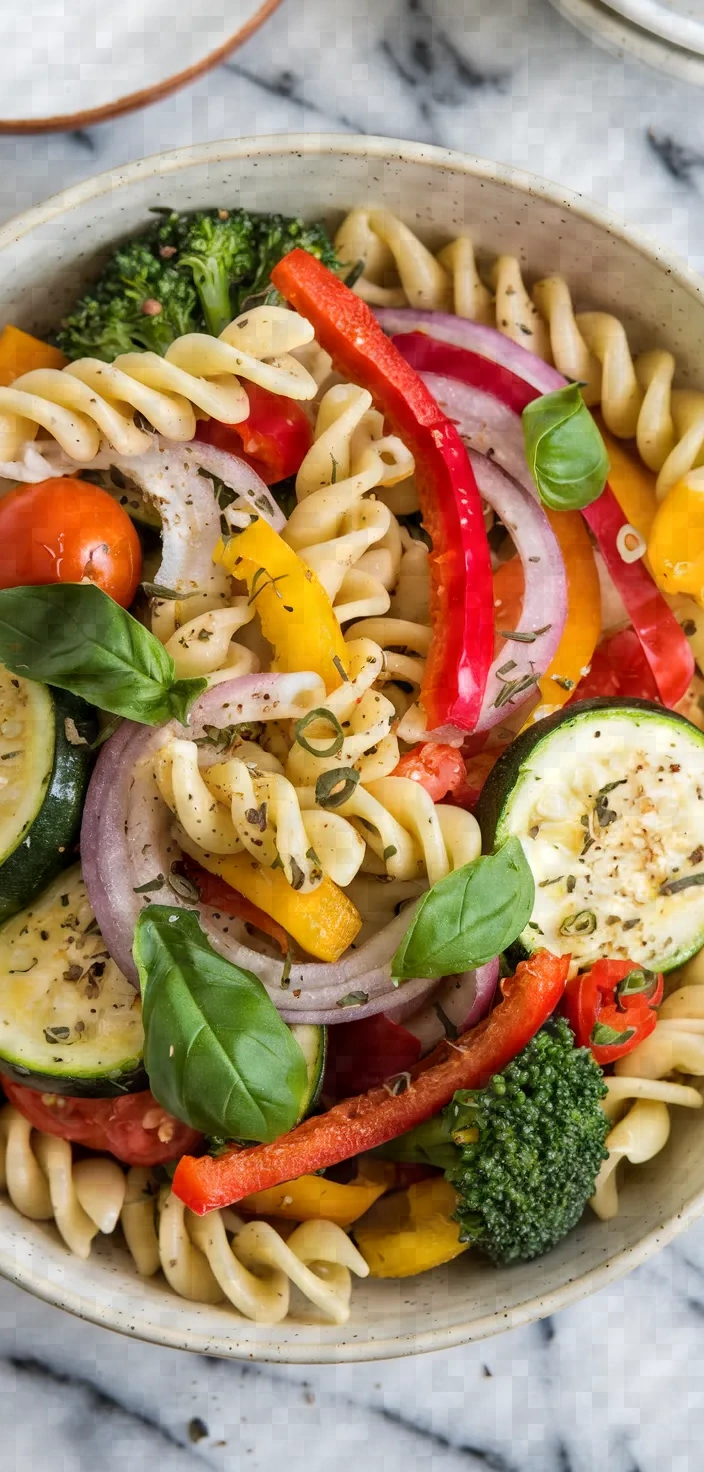
Pasta primavera is a dish that makes my heart sing. It teems with the vitamin-rich joy of a multitude of finely sliced and gorgeously hued vegetables.
Ever the reliable rock star in the vegetable world, the zucchini holds court alongside vivid red onion and sunny-yellow squash; sweet, crunchy bell peppers; and such green gods as asparagus and broccoli. On top of that, the lovely dish grabs hold of a guaranteed rocking flavor profile—good ol’ garlic, herbal-tastic fresh basil, and lemon juice for a light, zingy finish.

Ingredients
12 ounces pasta (such as penne or fettuccine)
2 tablespoons olive oil
1 red onion, thinly sliced
3 cloves garlic, minced
1 red bell pepper, sliced
1 yellow bell pepper, sliced
1 zucchini, sliced into half-moons
1 cup cherry tomatoes, halved
1 cup broccoli florets
1 teaspoon dried oregano
Salt and black pepper to taste
1/4 cup fresh basil, chopped
1 tablespoon lemon juice
Nutritional yeast or vegan parmesan for serving (optional)
Instructions
1. Prepare the pasta in a large pot of salted, boiling water according to the package directions until it achieves the “firm to the bite” stage, known as al dente. Drain in a colander and reserve.
2. In a big frying pan over medium heat, warm the olive oil. Toss in the red onion and garlic, and stir-fry until the onion is soft, which should take about 3-4 minutes.
3. In the skillet, combine the red and yellow bell peppers, zucchini, cherry tomatoes, and broccoli. Season with oregano, salt, and black pepper. Sauté the veggies until they become tender yet still have a memorable crispness, a range that falls around five to seven minutes.
4. In a skillet, combine the sautéed vegetables with the cooked pasta. Stir in the chopped basil and juice from 1 lemon. Make sure everything is well mixed and heated through before serving.
5. Before serving the pasta primavera, if desired, sprinkle on some nutritional yeast or vegan parmesan. This dish wants seasoning; it begs for salt and pepper to adjust it to your exact liking. Don’t be shy about it, and serve it hot!
9. Plant Based Sushi Rolls
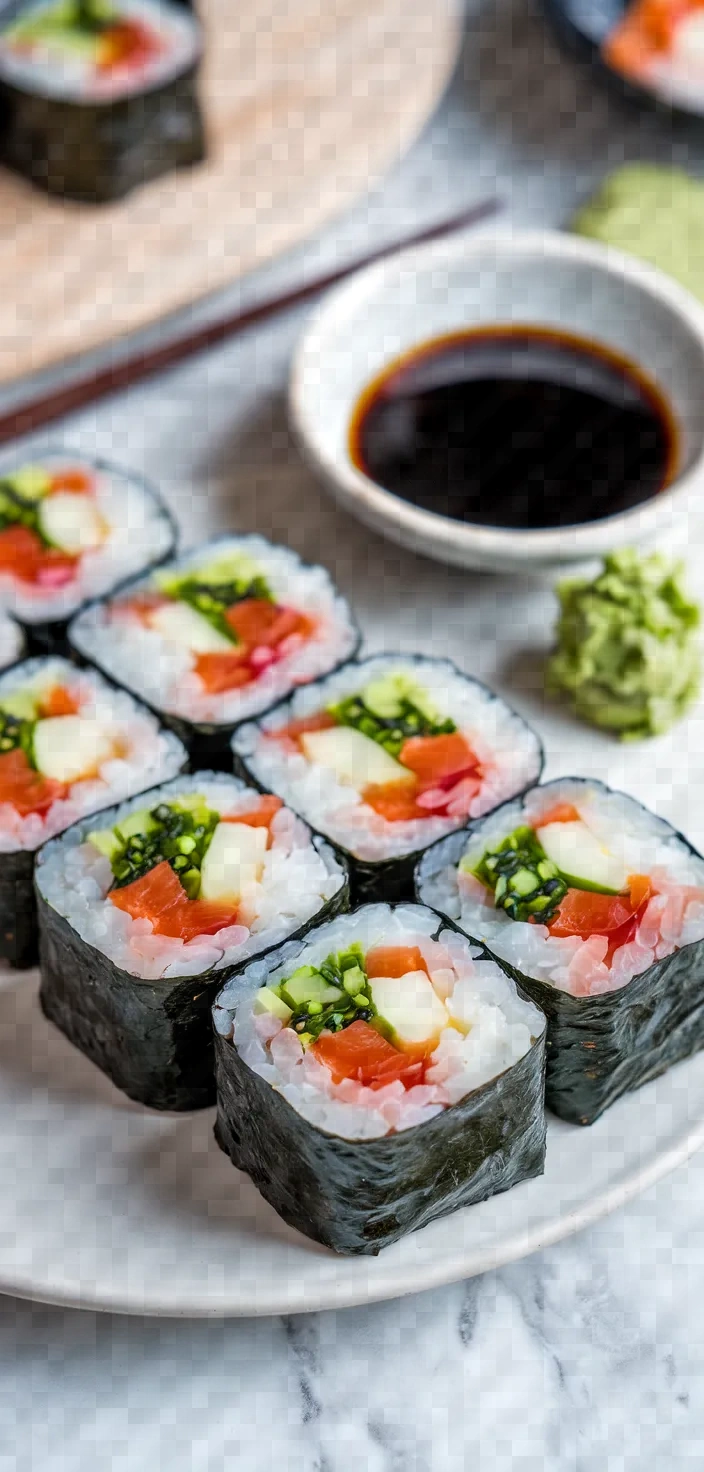
I adore plant-based sushi rolls, a vivid vegetarian alternative to traditional sushi. Its fresh ingredients—cucumber, avocado, and bell pepper, for instance—make this dish as good for the eyes and as it is for the palette—delightful with soy sauce, pickled ginger, and wasabi.

Ingredients
1 cup sushi rice
1 1/4 cups water
2 tablespoons rice vinegar
2 tablespoons sugar
1/2 teaspoon salt
4 sheets nori (seaweed)
1 small cucumber, julienned
1 avocado, sliced
1 medium carrot, julienned
1/2 bell pepper, julienned
Soy sauce, for serving
Pickled ginger, for serving
Wasabi, for serving
Instructions
1. Wash the sushi rice with cold running water until the water coming off the rice is clear. Place rice and water into the rice cooker and cook according to the rice cooker’s directions.
2. Take a small bowl and mix together the rice vinegar, sugar, and salt until they’re dissolved. Then, slowly mix this blend into the rice until it’s well incorporated. Let the rice cool to room temperature.
3. Place a sheet of nori on a bamboo sushi mat, with the glossy side facing down. Cover the nori with an even, thin layer of sushi rice, leaving roughly 1 inch of bare nori at the top edge.
4. Line the bottom edge of the rice with cucumbers, avocado, carrots, and bell pepper.
5. Using the bamboo mat, roll the sushi into a tight cylinder, exerting gentle pressure as you do so. Moisten the edge that remains unsealed, and it will stay shut once you set the roll down.
6. Cut the roll into pieces that are easy to eat and serve with soy sauce, pickled ginger, and wasabi.
10. Plant Based Stuffed Peppers

My favorite dish is stuffed peppers, where the bell peppers become vessels of savory goodness, filled to their very tops with a mixture of quinoa, black beans, and corn. Always cooked to perfection, they are a delightful plant-based dish that I could never tire of.
Cooking the diced tomatoes with the cumin and chili powder brings a whole new dimension of flavor.

Ingredients
4 large bell peppers (any color)
1 cup cooked quinoa
1 can (15 oz) black beans, drained and rinsed
1 cup corn kernels (fresh, frozen, or canned)
1 cup diced tomatoes
1 small onion, diced
2 cloves garlic, minced
1 teaspoon ground cumin
1 teaspoon chili powder
Salt and pepper to taste
1 tablespoon olive oil
1/4 cup chopped fresh cilantro
1 lime, juiced
Optional: avocado slices for serving
Instructions
1. Set your oven to 375°F (190°C) to preheat. Take the bell peppers and cut off their tops, then deseed them and remove the membranes.
2. In a broad frying pan, warm the olive oil on medium. Toss in the onion and garlic, and sauté until the onion nearly loses its color and becomes soft and transparent, approximately 5 minutes.
3. Combine the cooked quinoa, black beans, corn, diced tomatoes, cumin, chili powder, salt, and pepper in a skillet. Heat the mixture on medium for 3-5 minutes, or until it is warmed through and all the flavors meld together.
4. Take the skillet off the heat and mix in the chopped cilantro and lime juice.
5. Fill each bell pepper with the quinoa mixture, packing it in tightly. Place the filled peppers in a baking dish and bake for 25-30 minutes, or until the peppers give way when pierced with a fork.
6. You can serve it warm and add avocado slices on top if you want.
11. Plant Based Ratatouille
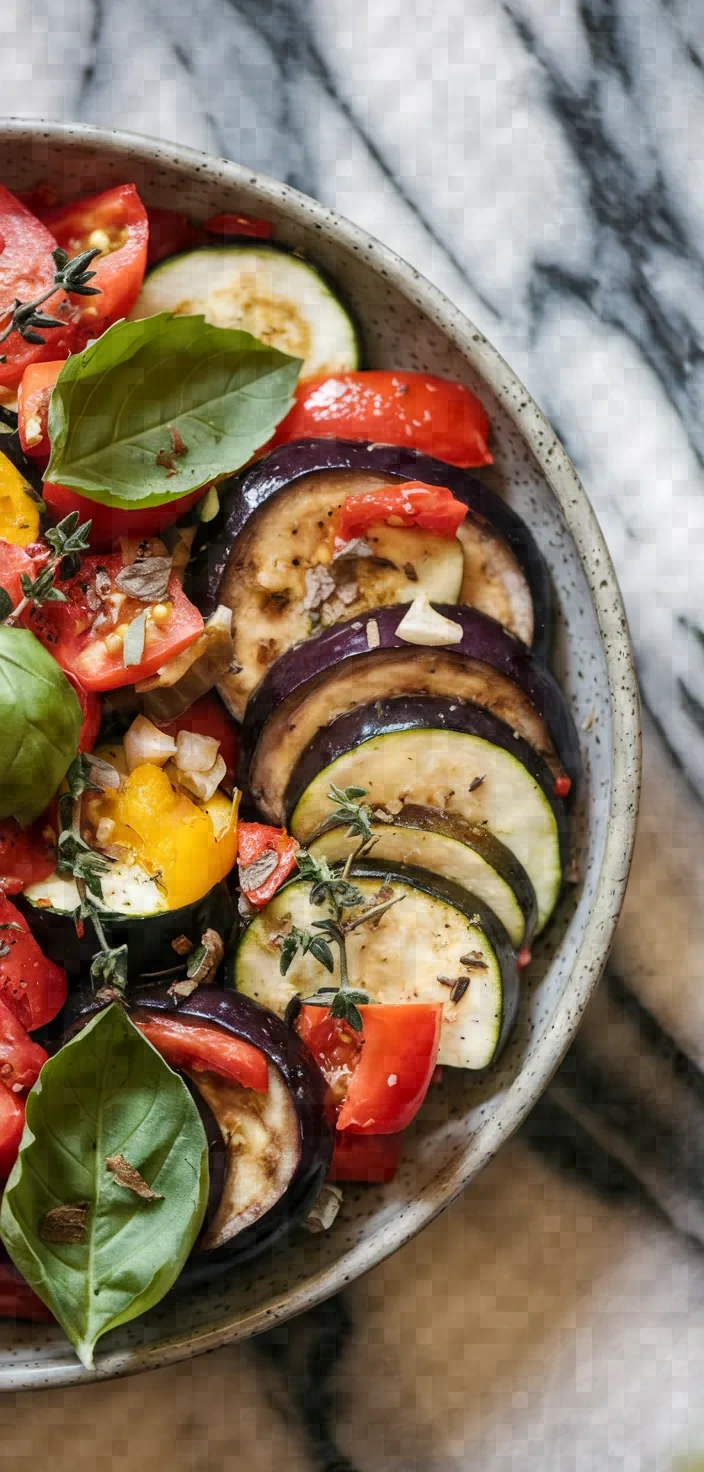
A plant-based ratatouille is a dish I adore for both its simplicity and its sunny, vibrant flavors. With fresh ingredients like eggplant, zucchini, and sweet bell peppers, as well as an ample supply of garlic and herbs, this dish could hardly embody anything other than the Mediterranean essence.
It is roasted to perfection and served at room temperature, which makes it perfect for mealtime no matter the season.
 Ingredients
Ingredients
1 large eggplant, diced
2 medium zucchinis, sliced
1 red bell pepper, chopped
1 yellow bell pepper, chopped
1 onion, chopped
3 cloves garlic, minced
4 large tomatoes, chopped
1/4 cup olive oil
1 teaspoon dried thyme
1 teaspoon dried basil
Salt and pepper to taste
Fresh basil leaves for garnish
Instructions
1. Set the microwave to 400°F (200°C) to heat.
2. In a spacious roasting pan, mix the eggplant, zucchini, bell peppers, onion, and garlic. Add a drizzle of good olive oil and an equally good measure of dried thyme, dried basil, salt, and freshly ground black pepper. Give everything a good stir so that all the ingredients are well seasoned and nicely coated with oil.
3. In the roasting pan, spread the vegetables evenly. Place the pan in the preheated oven. Roast for 30 minutes, stirring halfway through, until the vegetables are tender.
4. Place the finely chopped tomatoes in the pan and blend well. Then, return the pan to the oven and let it cook for another 15 minutes.
5. Take the pan from the oven, check the seasoning, and adjust if necessary. When it’s perfect for your palate, serve it up and garnish with just-picked basil leaves.
12. Plant Based Shepherd’s Pie
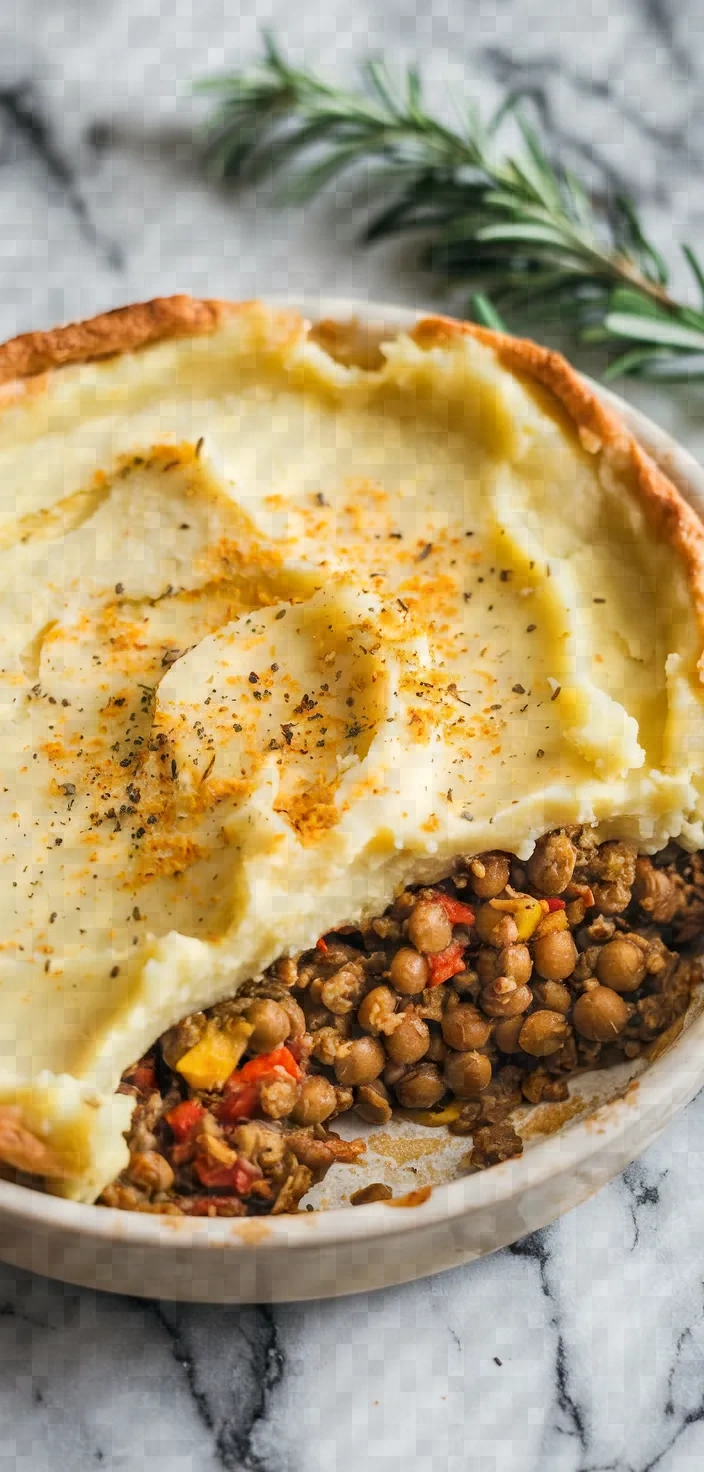
A plant-based shepherd’s pie is the most comforting thing I can imagine. Its hearty mix of lentils, carrots, and mushrooms almost makes me forget that my mashed potato topping is made with anything but cream and butter.
It’s a small miracle that so much flavor and comfort can come from such good-for-you ingredients, like the fresh thyme and rosemary that I decided to stir in for an herby note.

Ingredients
2 tablespoons olive oil
1 large onion, diced
2 cloves garlic, minced
2 large carrots, diced
2 celery stalks, diced
1 cup frozen peas
1 cup corn kernels
1 cup mushrooms, chopped
1 can (15 oz) lentils, drained and rinsed
2 tablespoons tomato paste
1 teaspoon fresh thyme
1 teaspoon fresh rosemary, chopped
1 cup vegetable broth
2 pounds potatoes, peeled and chopped
1/2 cup unsweetened almond milk
2 tablespoons vegan butter
Salt and pepper to taste
Optional: nutritional yeast for topping
Instructions
1. Set your oven to heat at 400 degrees Fahrenheit (200 degrees Celsius).
2. In a very large skillet, heat some olive oil over medium heat. Put in a large amount of chopped yellow onion and a smaller amount of chopped garlic. Sauté them until the onion has gone from opaque to translucent.
3. Incorporate carrots, celery, mushrooms, peas, and corn, and sauté for about 5 minutes. Incorporate the lentils, tomato paste, thyme, and rosemary. Then add the vegetable broth, salt, and pepper, and bring to a simmer. Allow the mixture to thicken slightly, about 10 minutes.
4. At the same time, in a large pot, cook the potatoes in salted water until tender. Pour off the water and mash the potatoes, adding almond milk, vegan butter, salt, and pepper.
5. Pour the vegetable blend into a baking dish and shower the top with an even layer of mashed potatoes. For a little splash of “cheesy” flavor, you can dust the potatoes with some nutritional yeast before popping them into the oven.
6. Place in the oven for 20 to 25 minutes, or until the top is a light golden hue. Allow to cool somewhat before plating. Bon appétit!
13. Plant Based Poke Bowl
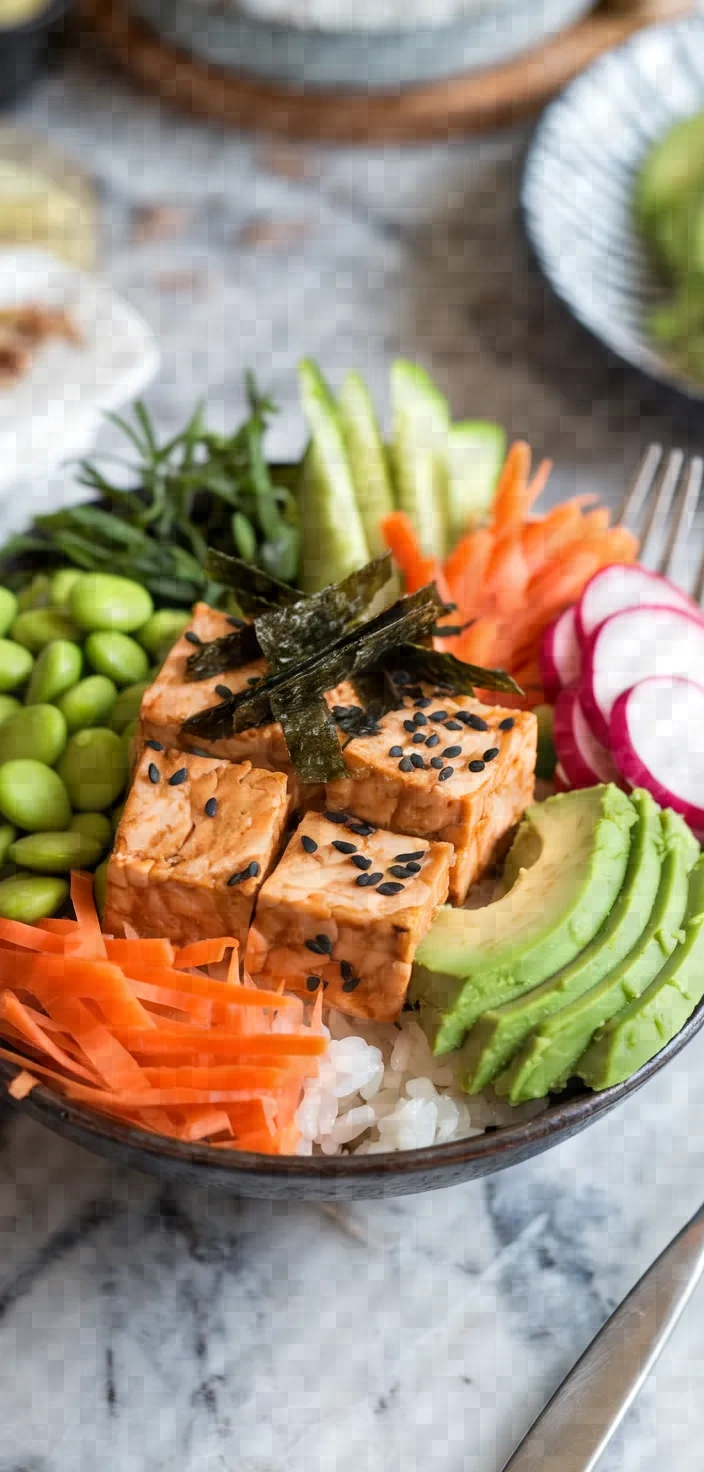
I take pleasure in assembling a lively, plant-based poke bowl, one that explodes with flavor and texture as a result of the harmonious interplay of its marinated tofu, creamy avocado, and crunchy radishes. The poke bowl’s base of sushi rice and edamame feels incredibly satisfying, while the black sesame seeds and nori strips achieve the same kind of visual appeal that garnishes in Japanese cooking are meant to achieve.

Ingredients
1 cup sushi rice
2 cups water
2 tablespoons rice vinegar
1 tablespoon sugar
1 teaspoon salt
1 cup diced firm tofu
2 tablespoons soy sauce
1 tablespoon sesame oil
1 avocado, sliced
1 tablespoon black sesame seeds
1 cup shelled edamame
1 cucumber, thinly sliced
1 carrot, julienned
2 radishes, thinly sliced
1 sheet nori, cut into thin strips
Optional: pickled ginger and wasabi for serving
Instructions
1. Wash the sushi rice in cold water until it runs clear. You want to get rid of all the surface starch, which makes the rice sticky when cooked. Place the rinsed rice in a suitable pot, along with 2 cups of fresh, clean water. Bring to a boil, then turn the heat down as low as it will go, cover, and cook for 15 minutes. After 15 minutes, take the pot off the heat and let it sit for an additional 10 minutes, still covered.
2. Take a small bowl and add some rice vinegar, sugar, and salt. Stir until everything is dissolved. Now take this concoction and gently mix it into some cooked sushi rice. Use a wooden spatula or some sort of wooden utensil to do this mixing. When it’s thoroughly mixed, let the rice come down to room temperature.
3. Cube the tofu and place it in a bowl. Toss with soy sauce and sesame oil, making sure the mixture gets into the tofu’s nooks and crannies. Let the tofu soak in the marinade for at least 10 minutes while you prep the other ingredients.
4. Assemble the poke bowl beginning with a base layer of sushi rice, and then add marinated tofu, avocado slices, and other assorted toppings.
5. Add black sesame seeds, strips of nori, and accompany with pickled ginger and wasabi, if you like. Then dig in.
14. Plant Based Burrito Bowl
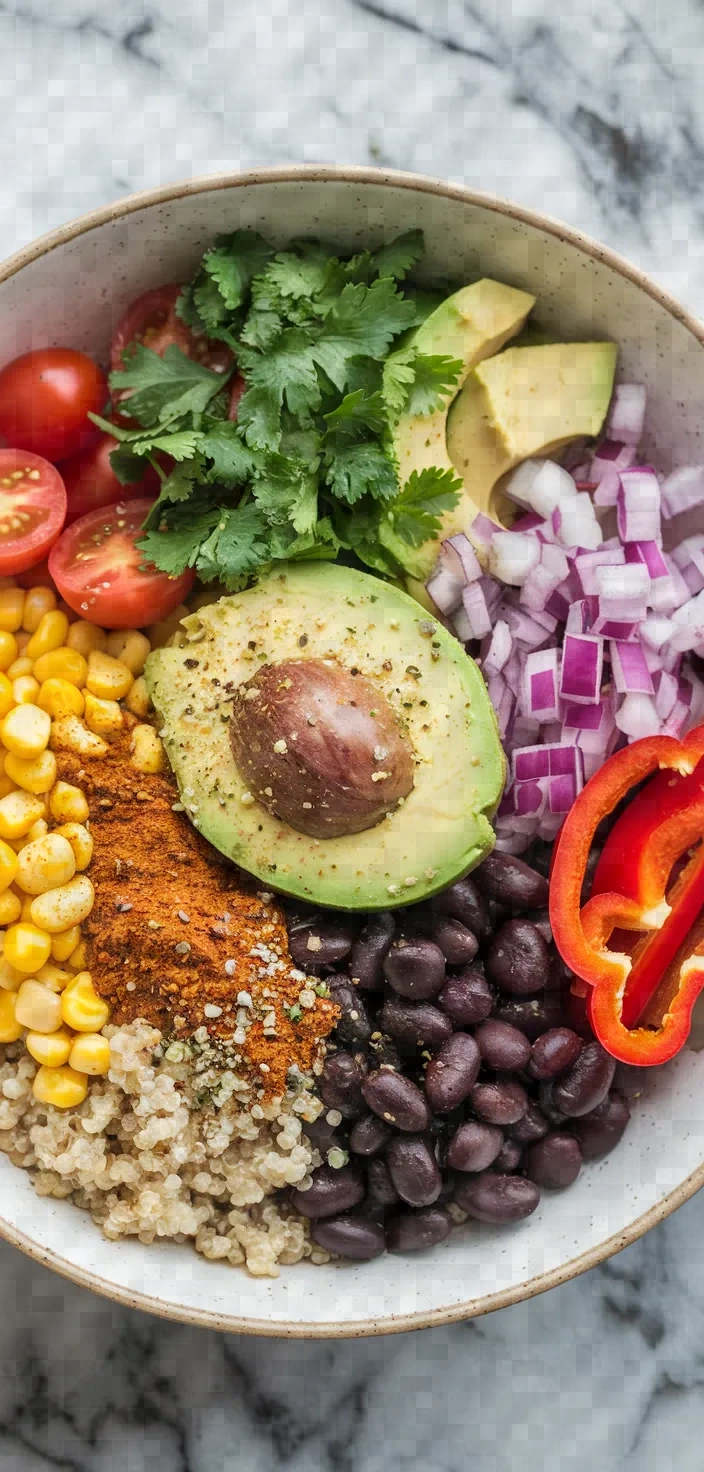
I value the creativity and adaptability of a burrito bowl. The ones I make at home start with a base of either quinoa or brown rice, and then I layer on some black beans.
They’re all the rage now, but I was eating plant-based burrito bowls long before they had become Instagrammable. I balanced the beans with plant-based protein and added a guacamole-like spread that contained chickpeas for a creamy topping.

Ingredients
1 cup cooked quinoa or brown rice
1 can (15 oz) black beans, drained and rinsed
1 cup corn kernels (fresh, canned, or frozen)
1 cup cherry tomatoes, halved
1 avocado, diced
1 small red onion, diced
1 red bell pepper, diced
1 lime, juiced
1/4 cup fresh cilantro, chopped
1 teaspoon ground cumin
1 teaspoon chili powder
Salt and pepper to taste
Instructions
1. Prepare the foundation of your bowl by evenly distributing the cooked quinoa or brown rice into your serving bowls.
2. In a big mixing bowl, combine the black beans, corn, and the other fresh vegetables: cherry tomatoes, red onion, and red bell pepper.
3. The mixed vegetables should have the ground cumin, chili powder, salt, and pepper sprinkled over them and tossed until they are well-coated.
4. Incorporate the diced avocado, lime juice, and chopped cilantro into the combination and delicately mix the elements so they remain intact.
5. Distribute the combination of beans and vegetables atop each bowl. Spoon it over the warm quinoa or rice base in an even layer.
6. Enjoy your delicious plant-based burrito bowls served straight away.
15. Plant Based Paella
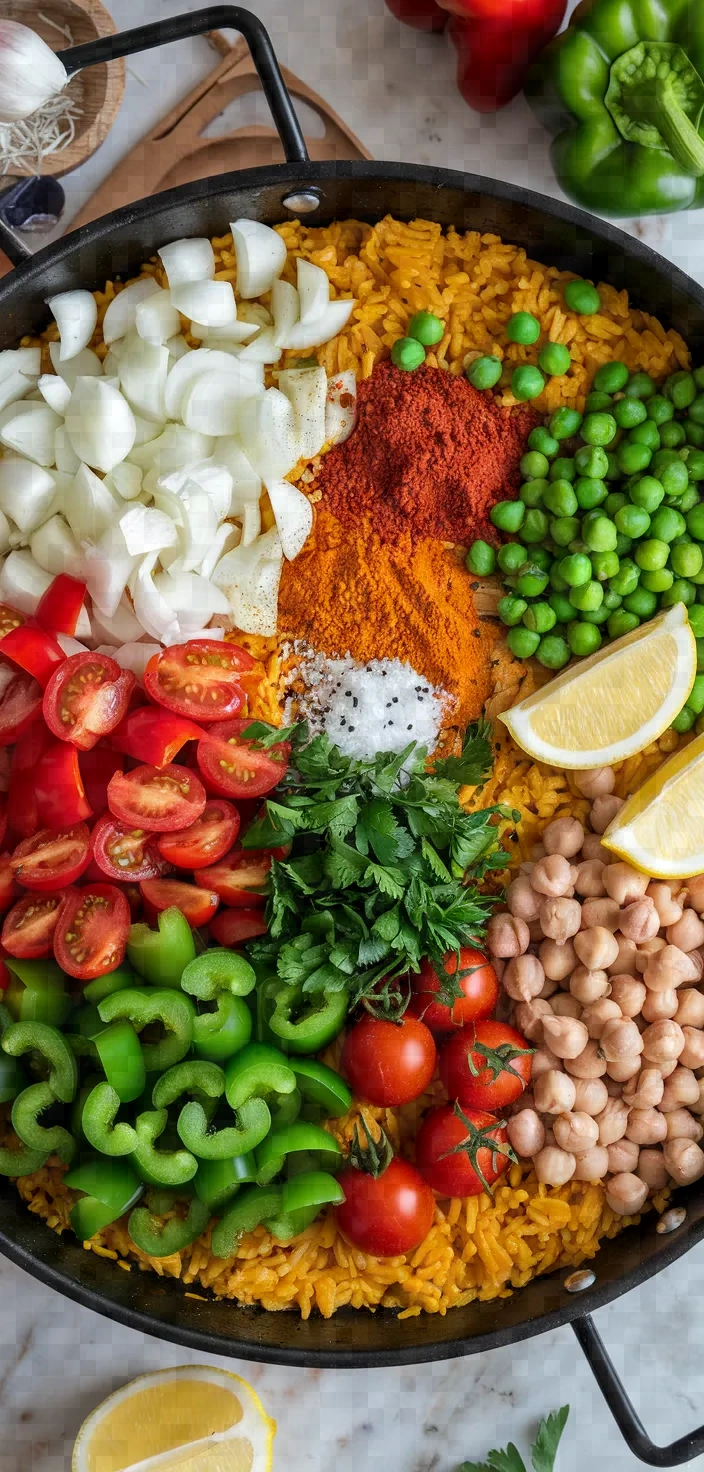
My plant-based paella features a robust medley of ingredients—arborio rice, chickpeas, and sweet peppers. What I love about this recipe is its simplicity.
Paella is a Spanish dish that can be made in numerous ways, and my version has a flavor profile as close to the real thing as possible, thanks to smoked paprika, saffron (which I think should be mandatory in any paella, plant-based or otherwise), and fresh parsley. Oh, and don’t forget the lemon.

Ingredients
2 tablespoons olive oil
1 onion, finely chopped
3 cloves garlic, minced
1 red bell pepper, diced
1 green bell pepper, diced
1 cup cherry tomatoes, halved
1 cup arborio rice
1 teaspoon smoked paprika
1/2 teaspoon ground turmeric
1/4 teaspoon saffron threads, soaked in 2 tablespoons warm water
3 cups vegetable broth
1 cup frozen peas
1 can (15 oz) chickpeas, drained and rinsed
Salt and pepper to taste
Lemon wedges, for serving
Fresh parsley, chopped, for garnish#
Instructions
1. In a large frying pan or paella pan, pour in the olive oil and place over medium heat. When the oil is hot, add the onion and garlic and sauté until they are soft and fragrant, about 3-4 minutes.
2. Add the red and green bell peppers, and cook until they start to soften, which should take about 5 minutes.
3. Add the cherry tomatoes, arborio rice, smoked paprika, ground turmeric, and the soaked saffron (with the water). Stir to combine completely.
4. Add the vegetable broth and bring to a boil, then reduce the heat to low and simmer uncovered for about 15 minutes, stirring occasionally.
5. Stir in the peas and chickpeas, then keep cooking until the rice is tender and most of the liquid is absorbed, about 10 minutes more. Season with salt and pepper.
6. Take the pan off the heat, and allow the paella to rest for several minutes. Use fresh parsley to garnish the dish, and serve it with wedges of lemon.
16. Plant Based Moussaka
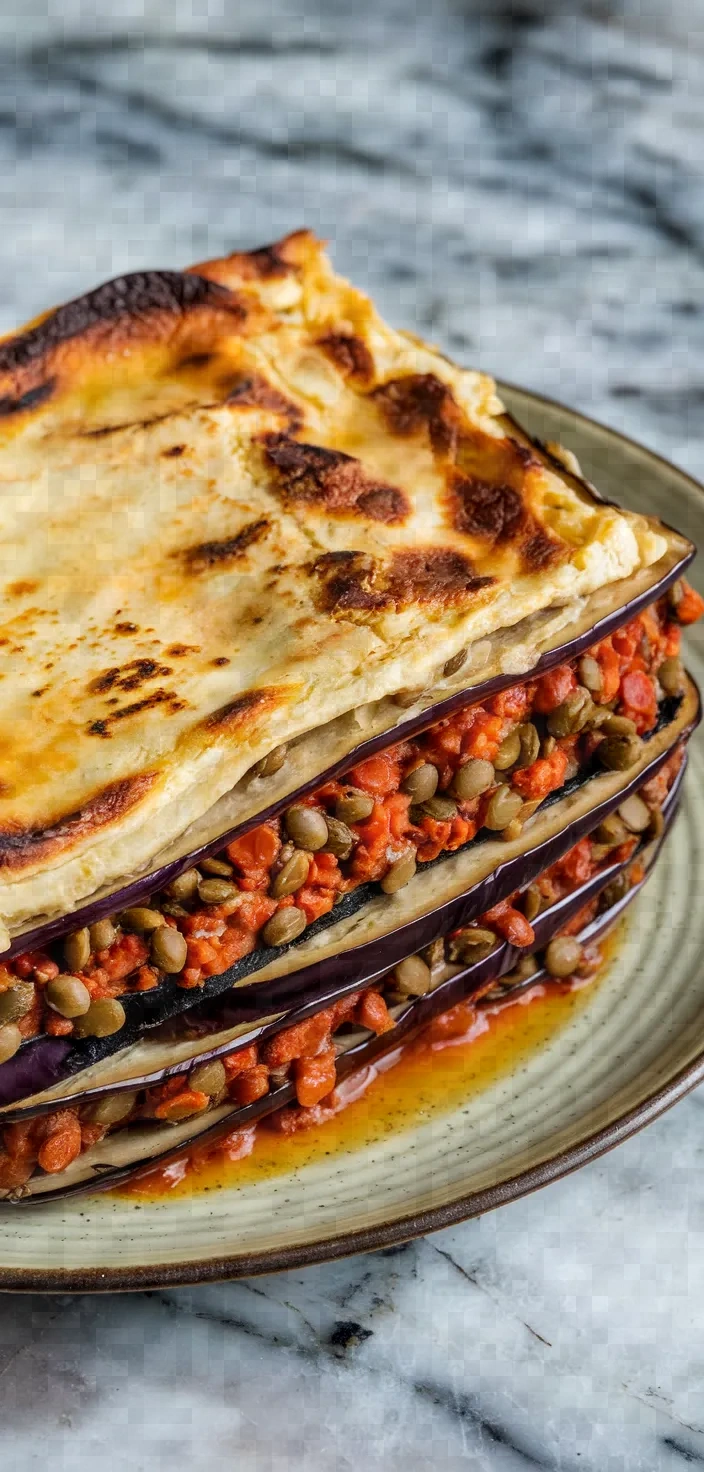
The moussaka that I make has the same comforting flavors as the traditional dish. I roast the eggplant and layer it with a spicy vegetable-lentil mix that has red bell peppers and zucchini, among other things.
The secret ingredient is the tahini-based “béchamel” that tops the moussaka .e.

Ingredients
2 large eggplants, sliced into 1/4-inch rounds
1 teaspoon salt (for salting eggplants)
2 tablespoons olive oil
1 large onion, diced
3 cloves garlic, minced
1 red bell pepper, diced
1 zucchini, diced
1 can (14 ounces) crushed tomatoes
1 teaspoon dried oregano
1 teaspoon dried thyme
1 teaspoon ground cinnamon
Salt and pepper to taste
1 cup lentils, cooked
2 cups plant-based milk
1/4 cup flour
1/4 cup nutritional yeast
Nutmeg, a pinch
Instructions
1. Set the oven to 400 °F (200 °C). Arrange the slices of eggplant on sheets of paper towel and dust them with salt. Allow the eggplant to sit for approximately 15 minutes. The eggplant will also shed some water, making it drier and better suited to roasting. After 15 minutes, pat the eggplant slices dry and proceed with the recipe.
2. In a broad frying pan, warm olive oil on medium. Toss in the onion, garlic, bell pepper, and zucchini. Sauté until just softened, about 5 minutes. Stir in the crushed tomatoes, dried oregano, thyme, cinnamon, salt, and pepper, making sure to combine everything well. Stir in the lentils. Allow to simmer for about 10 minutes.
3. To make the béchamel, whisk together the plant milk, flour, and nutritional yeast in a medium saucepan over medium-low heat until it thickens. I usually let it simmer for about 5-10 minutes. You really want to make sure the flour is nicely cooked and that your sauce has the right viscosity before you finish seasoning it with salt and a pinch of nutmeg.
4. Grease a baking dish with olive oil. Lay down half the eggplant slices at the bottom, then plunk down the vegetable-lentil mixture and spread it out, followed by the remaining eggplant slices—now you have a dish, and it’s time to bake.
5. Place the bechamel sauce atop the top layer, and give it a good spread for an even distribution. Bake in the oven for 30-35 minutes until the top layer is golden brown and bubbling. Give it a few minutes of calm to allow your casserole to set before you plunge in with a spoon. Enjoy!
17. Plant Based Risotto
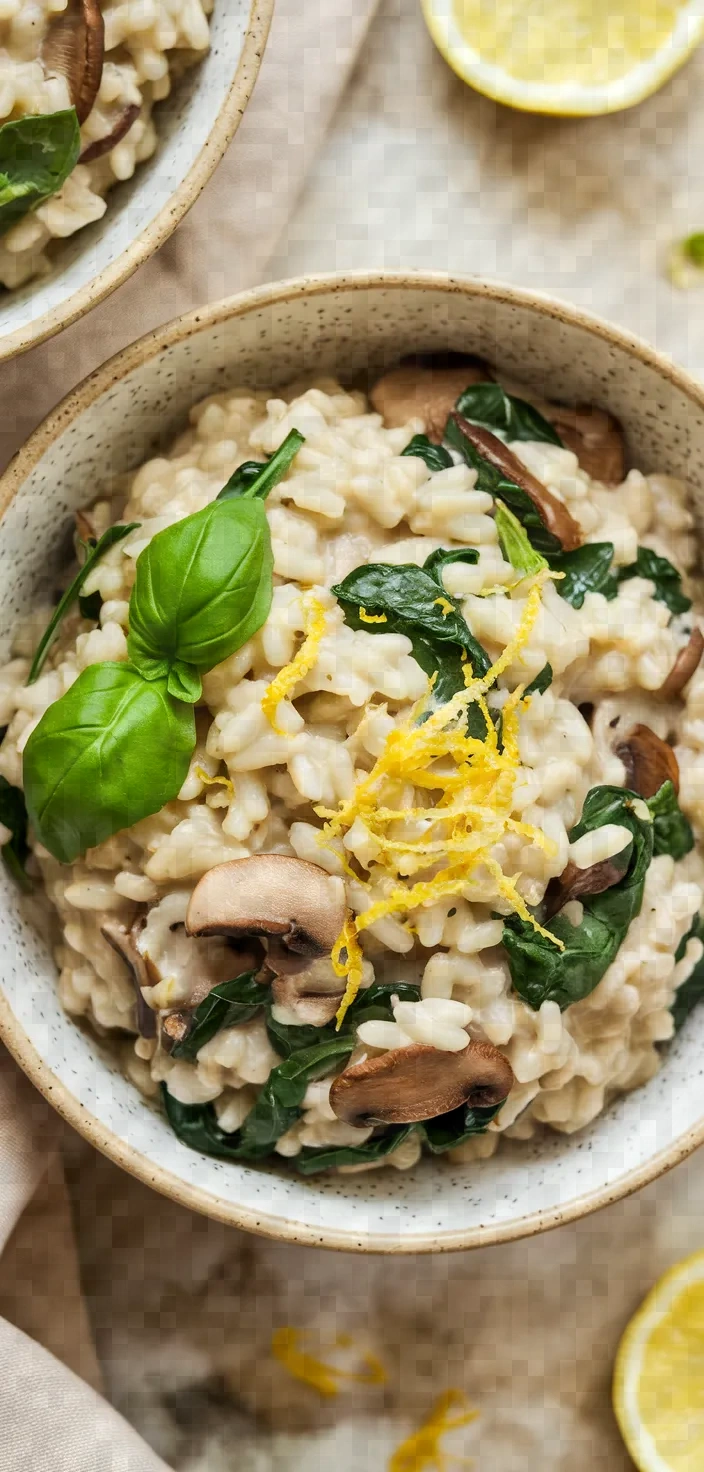
I love making a creamy plant-based risotto that is satisfying and wholesome. Arborio rice holds its shape as it cooks and releases just enough starch to create that creamy texture risotto is known for.
While it is traditional to make risotto with a ladle or two of wine, I have used lemon juice to help flavor the rice as it cooks. Once the rice is just barely al dente, stir in a handful of nutritional yeast for a Parmesan-like flavor (it is also a complete protein), followed by some finely chopped fresh basil; then the risotto is ready to serve.

Ingredients
1 tablespoon olive oil
1 onion, finely chopped
2 cloves garlic, minced
1 cup Arborio rice
1/2 cup white wine (optional)
4 cups vegetable broth, warmed
1 cup mushrooms, sliced
1 cup spinach, chopped
1/4 cup nutritional yeast
Salt and pepper, to taste
Fresh basil, for garnish
Lemon zest, for garnish
Instructions
1. In a big frying pan, warm olive oil on medium. Toss in the chopped onions and let them sauté to translucence, about three to four minutes. Then stir in the minced garlic and give it a minute to flavor the oil.
2. Incorporate the Arborio rice, and toast it for 1 to 2 minutes, until it’s kind of translucent around the edges. If you’re using it, pour in the white wine, and stir it into the rice until it’s absorbed.
3. Slowly incorporate the warmed vegetable broth, one cup at a time, into the mixture, stirring almost constantly. Let each cup be absorbed before you add the next one. This should take about 20 minutes.
4. With the final addition of broth, stir in the sliced mushrooms and chopped spinach. Cook until the rice reaches a creamy texture—still al dente, but not crunchy—and all the veggies are tender and ready to eat.
5. Stir nutritional yeast into the risotto, and add salt and pepper to taste. Turn off the heat, and serve.
6. For a light and bright finish, serve the risotto with fresh lemon zest and basil from the garden.
18. Plant Based Pad Thai
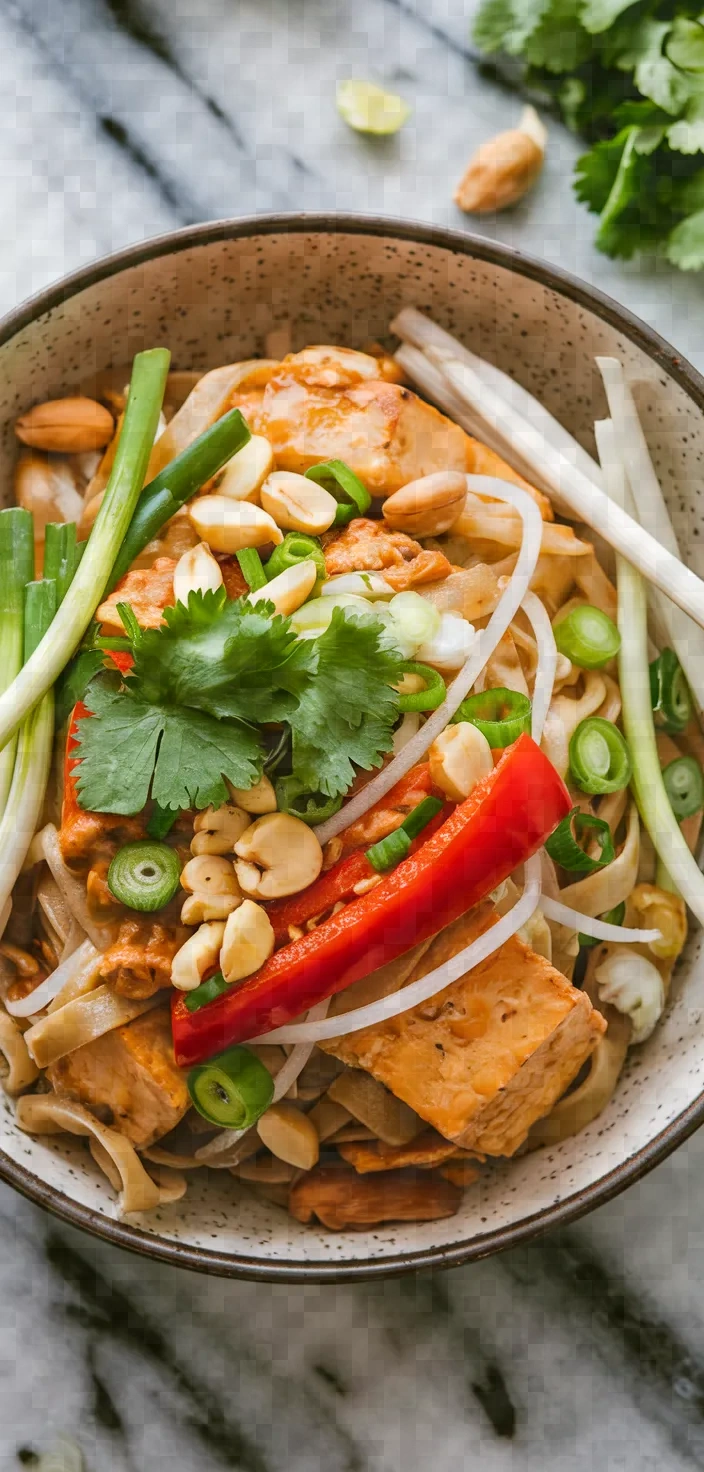
A delicious and colorful Pad Thai made with plants is actually a rare find.
Wholesome” does not even begin to describe what I feel for Pad Thai: it is light, it uplifts, it does not compromise on flavor or texture.

Ingredients
8 ounces rice noodles
2 tablespoons sesame oil or vegetable oil
1 block (14 ounces) firm tofu, drained and pressed
3 cloves garlic, minced
1 red bell pepper, thinly sliced
1 cup bean sprouts
2 green onions, chopped
1/4 cup roasted peanuts, chopped
1/4 cup tamari or soy sauce
2 tablespoons lime juice
1 tablespoon brown sugar
2 teaspoons tamarind paste
1/4 teaspoon red pepper flakes
1/4 cup fresh cilantro, chopped
Lime wedges, for serving
Instructions
1. Prepare the rice noodles as directed on the package. Drain and set them aside.
2. In a deep-sided sauté pan, warm 1 tablespoon of sesame oil over medium heat. Crumble the tofu into small chunks and add them to the pan. Sauté until the tofu is golden and crusty on at least one side, 8 to 10 minutes. Remove the tofu from the pan and turn off the heat.
3. In the same pan, pour in the leftover sesame oil. Add the garlic and red bell pepper and cook until the garlic is fragrant and the bell pepper is softened but still firm, about 2 minutes.
4. In a miniature mixing bowl, blend the tamari, lime juice, brown sugar, tamarind paste, and red pepper flakes together with a whisk until smooth.
5. Return the cooked noodles and tofu to the pan. Pour the sauce over everything and mix to combine. Add the bean sprouts and green onions and give everything a good stir.
6. Garnish with peanuts, cilantro, and lime wedges; then serve. To taste, adjust the seasoning with additional tamari and lime juice.
19. Plant Based Burger
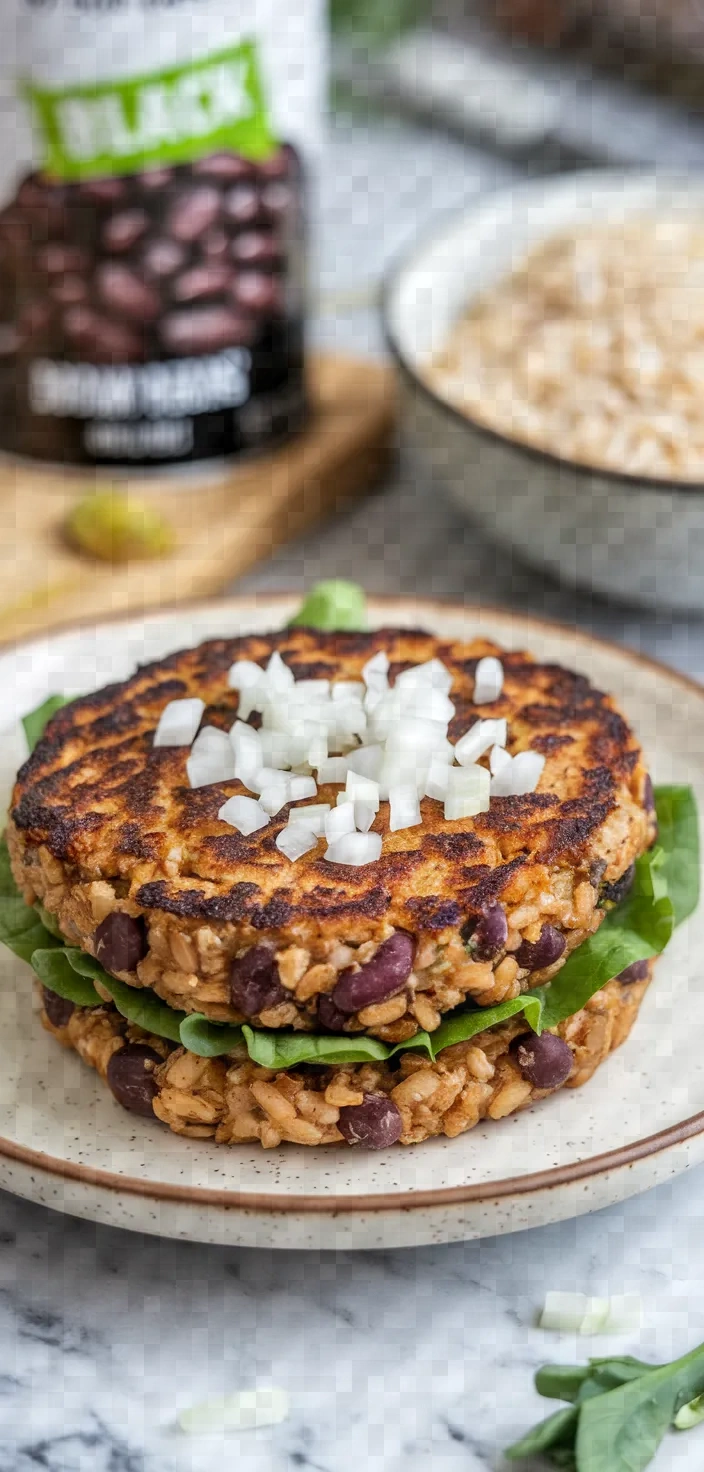
Finding recipes that are plant-based and delicious is always a thrill, especially when they’re chock-full of nourishing elements like black beans and brown rice. (Seriously, if these guys don’t fill you up and make you feel good, I don’t know what will.) But throw in some smoked paprika and the right simple-but-perfect seasoning mix, and you’ve got a burger that is next-level and totally worth including in a meal lineup.

Ingredients
1 can (15 oz) black beans, drained and rinsed
1 cup cooked brown rice
1/2 cup breadcrumbs
1 small onion, finely chopped
2 cloves garlic, minced
1 tablespoon ground flaxseed
3 tablespoons water
1 tablespoon soy sauce
1 teaspoon smoked paprika
1 teaspoon ground cumin
Salt and pepper to taste
Olive oil for cooking
Instructions
1. Mix the ground flaxseed with 3 tablespoons of water in a tiny bowl. Let it be for 5 minutes, so it can thicken.
2. In a large bowl, use a fork or potato masher to smash the black beans until they are mostly smooth. Or leave them unmashed whatever you prefer!
3. In a large mixing bowl, combine the ingredients: cooked brown rice, breadcrumbs, onion, garlic, soy sauce, smoked paprika, cumin, and the mixture of ground flaxseed and water. Season with salt and pepper, and mix till it holds together and is uniform in texture.
4. Divide the blend into 4-6 parts of equal size and shape them into patties.
5. In a large frying pan, pour in the olive oil, then reduce the heat to medium and let it warm up. Place the patties in the pan and allow them to cook for 4 to 5 minutes on one side. Then flip them over and cook for another 4 to 5 minutes on the other side until they are heated through and nicely browned.
6. Place the patties on buns and top them with whatever you like to make them a bit more interesting than just a plain old burger.
20. Plant Based Pizza
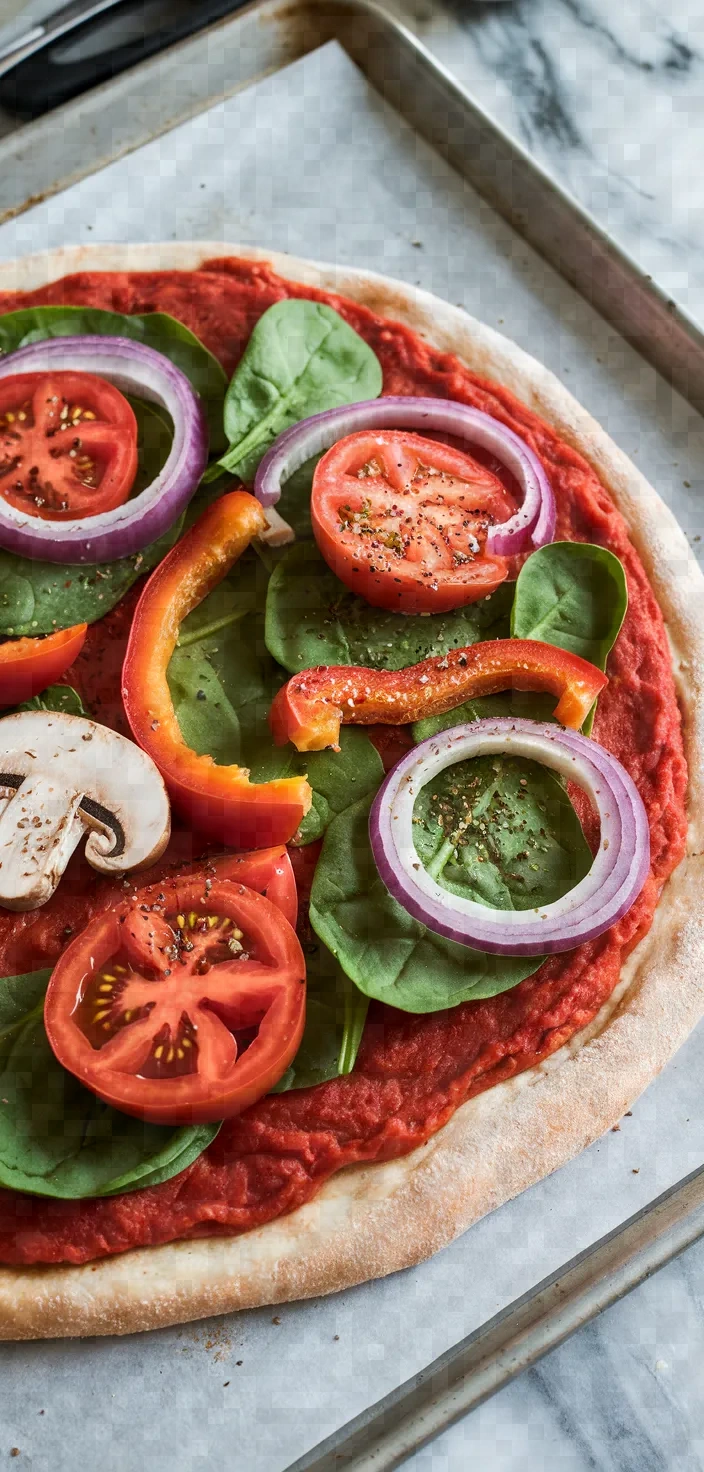
In my opinion, plant-based pizza reaches a state of perfection when the whole wheat dough is paired with vivid toppings like baby spinach, bell peppers, and sliced mushrooms. Underneath a delightful layer of tomato sauce amplified with nutritional yeast (or plant-based cheese), the pizza makes an audacious statement that vegans, vegetarians, and omnivores can all get behind: Plant-based meals can be hearty and filling.

Ingredients
Whole wheat pizza dough
Tomato sauce or a plant-based pizza sauce
Sliced tomatoes
Baby spinach
Sliced bell peppers (any color)
Sliced red onion
Sliced mushrooms
Nutritional yeast or plant-based cheese
Italian seasoning
Olive oil
Salt and pepper
Instructions
1. Set your oven to 475°F (245°C) to begin the heating process.
2. On a floured surface, extend the dough made from whole wheat flour and transfer it to a lightly oiled pizza stone or baking sheet.
3. Over the dough, spread a thin layer of tomato sauce, leaving a little room around the edges for the crust.
4. Evenly distribute the sliced tomatoes, baby spinach, bell peppers, red onion, and mushrooms over the sauce.
5. Add nutritional yeast or plant-based cheese to the vegetables as an extra source of protein, and amply season with Italian spices, salt, and pepper to bring out the flavor.
6. Pour a bit of olive oil over the top and then bake it for 12 to 15 minutes. Look for a golden-brown crust and tender, juicy vegetables. When it’s ready, let it cool a shade before slicing and serving.
21. Plant Based Gnocchi
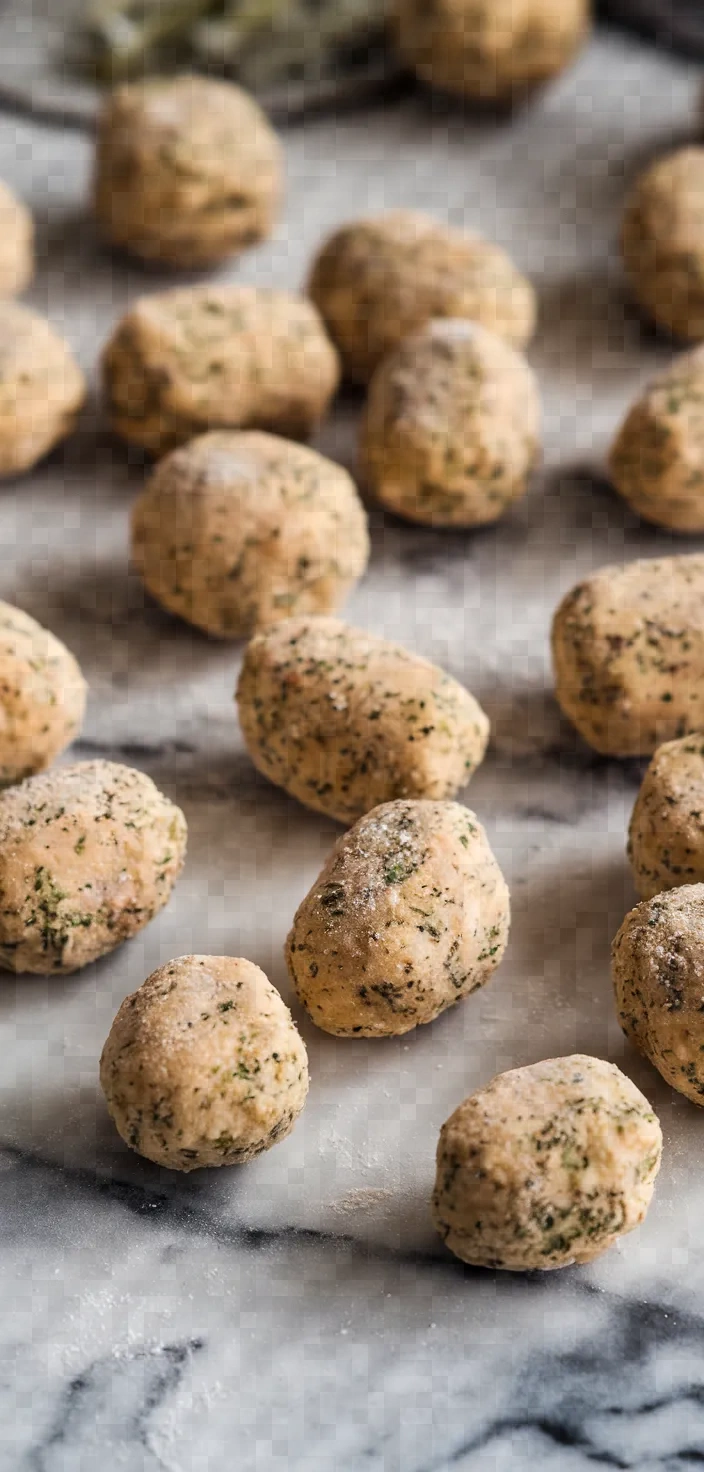
I adore discovering dishes that are rooted in plants. And I have to say that this particular recipe for gnocchi, made with russet potatoes, is an absolute wonder.
The fluffy potato is complemented perfectly by the all-purpose flour, nutritional yeast, and a smidge of garlic and onion powder. It’s an unfancy blend that results in a light and tender dumpling that’s altogether delightful and delicious, and a stunningly different take on our Italian favorites.

Ingredients
2 cups russet potatoes, peeled and diced
1 cup all-purpose flour
1/4 cup nutritional yeast
1 teaspoon salt
1/2 teaspoon black pepper
1/4 teaspoon garlic powder
1/4 teaspoon onion powder
1 tablespoon olive oil
Instructions
1. Dice the potatoes and place them in a pot of salted water. Bring to a boil and cook for 10-15 minutes, or until tender. Drain the potatoes and allow them to cool for a few minutes.
2. Beat the potatoes until they are smooth, and let them cool completely.
3. In a large bowl, combine the potatoes, flour, and other ingredients. Work with a wooden spoon or your hands until the mixture holds together like a dough.
4. Place the dough on a floured surface and knead it gently until it is smooth. Cut the smooth, silky dough into 4 equal pieces.
5. Take each part and roll it into a long strand, roughly 1/2 inch thick. Slice the strands into 1-inch segments.
6. Start with a pot of salted water. Bring the water to a vigorous boil. Gnocchi cooked in too-small pot may not rise to the surface as they should. For pro-level results, or at least a plating that doesn’t look like a six-year-old made it, divide the gnocchi into two batches. Cook each batch for about 90 seconds (or slightly longer, if necessary), and serve with the sauce of your choice.



